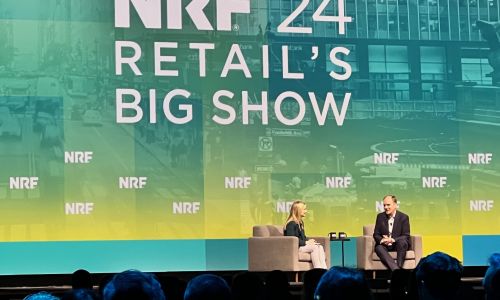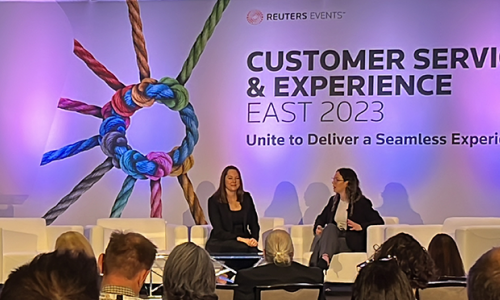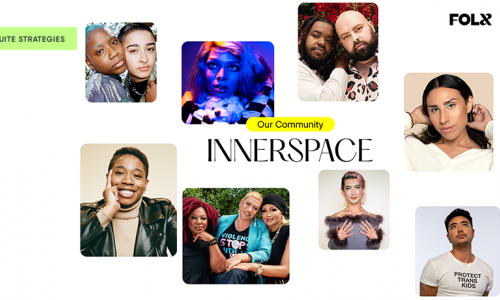As told to Erika Rasmusson Janes
At Big River Telephone we have an old-fashioned view of using new technology. We're focused on selling in rural America, and a lot of rural America has not had access to new technology—they still believe in a relationship. And so do we. So we use technology, but we augment it with real people.
All organizations need to understand the new marketing and sales applications available to them and customize them to the way their customers want to get information. Too many companies pound their customers with their technology tools and their way of doing business—with the thought that the customer will change his purchasing methods to the seller's way of doing business. These organizations stress the use of technology, but they're not getting results they want because it's not what the customer wants. And—surprise—the customer is why any company is in business.
In order to successfully create and then deliver value propositions, you need to understand what your customers want and how they want to acquire it. The mind-set of, "The customers is the center of our activities and we need to focus on meeting their needs," sounds so simple, but businesses love to make it convoluted.
How do you understand what your customers want? Communicate with them. We continually talk to customers. We do surveys. Two years ago we even began offering something we call Web Advantage seminars for city economic development groups to talk about how they use technology. Doing that gave us feedback. We have to know our market and what's going on in the industry, and when we're interfacing with customers, the offerings we're providing have to be a value proposition for them. We consider ourselves an information-movement company, so we look at how can we help our customers move information more effectively, and from that we develop products and services.
Our sales and marketing efforts are also closely aligned. These functions have changed with technology: Twitter, Facebook, LinkedIn, YouTube, and other social media sites have forced us to embrace and use these to market and sell services. Technology used to be computers and guys with pocket protectors. Today it's the key to service, sales, and marketing. But all of these need to be tied together and wrapped around the customer.
When I make a purchase from a vendor, I have a habit of stapling its marketing material to the contract and saying, "As long as the product does what your marketing material states we'll be fine." And 75 percent of the time, the sales team gulps, turns red, and starts stammering that the marketing material may not exactly define what the product does or doesn't do. Why would two departments in the same organization be so far off? One is dealing in hype and the other in reality, but it's the customer they need to focus on. Tie your functions together and deliver a message that's cohesive and that you can place your reputation on.
Instituting a customer-centric mind-set
We have a customer relationship management software product that's the foundation of our customer service, and everyone from the CEO to the receptionist is well trained and versed in using that product. This is what helps the customer perception of Big River Telephone. If you call and talk to me today and then tomorrow I'm not available, someone else can pull up your account immediately and know that you talked to me yesterday. Now, from a customer's point of view, that's personalized service. All of a sudden that relationship is tighter and they feel like they're more than just a number. That tool has allowed us to individualize all our customers. The product may be consistent, but customers are not treated like they're all the same. It's individualized, because we're pulling up all of the information we have on them.
We treat every customer the same when it comes to price. If you ask the guy sitting next to you what he's paying for our service, it's the same as what you're paying. Our customers respect that. Where we do segment customers, at times, is with specific new product offerings. Customers in the medical field, for example, require a certain level of security that other accounts may not need, so if we've developed a new fax that's HIPPA compliant we'll target our medical accounts.
Because we live by a customer-focused model from the top of the organization down, it's pretty simple to get buy-in from the entire team. Our internal communication constantly stresses the customer, and the tools we put in employees' hands are customer-focused. And because we use the tools on a day-to-day basis, that ingrains the importance of the platform—we call it Aviator—for everyone. If a customer called me and there was no record of that same customer having called the day before, we'd be able to find out who talked to them and then didn't update the system. That's not about beating down the employee; it helps drive what we need to do.
Everybody in our company knows that I look in the system and pull up information. In my previous jobs we had systems that management didn't actually use—when someone wanted information they'd make a phone call. That defeats the purpose and sends the wrong message to employees. It's disrespectful to them. When I ask my peers if they can pull up their CRM reports and they say no, it makes me wonder: If you don't use it, why do you expect your employees to use it?
Every morning at 8:30 we have a managers meeting, and what's reviewed is the information we pull out of the system. By doing that every day, people understand that we're making business decisions based on that information so it has to be correct. And every day at 4:30 we send an email out to the entire company reminding them to update the system. That helps drive what we need to do.
There's tangible proof that our approach is working: In the case of landlines, the industry is full of doom and gloom, and our competitors' business in that area is down 15 to 20 percent. However this past year our landline growth was up 1 percent. That doesn't sound like much, but when our competition is down and we're up, that's saying something. And it's because of customer relationships.
Our tag is "Real People. Real Service. Real Simple." All the technology gee-whiz tools are great, but people still buy from people they know and trust. Our customers give us the chance to provide them services in exchange for their hard-earned money. We respect that, we're honored to be allowed to provide that service, we realize they have a choice, and we will do whatever we can to make their experience with Big River the best that they can have.






